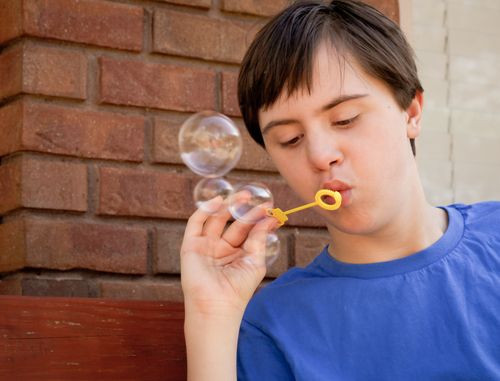Brain Stimulation Erases Autism For A Month In First-Ever Randomized, Double-Blind Trial

Boosting social skills in people with autism has been a challenge for medical science for decades. Deficiencies in empathy often stand out as the face of the disorder, as people with autism have difficulty reading body language and deciphering emotional cues. Now, the first ever randomized, double-blind study to concern these issues has shown effectiveness at jumpstarting these social skills through brain stimulation.
One of the primary cognitive laggards in people with autism is a region of the brain called the dorsomedial prefrontal cortex (dPFC). It sits right behind your forehead and mediates a bulk of your personality traits. "It's also the part of the brain linked with understanding others' thoughts, beliefs and intentions," Peter Enticott of Monash University, told New Scientist. People with autism tend to have an underperforming dPFC.
Enticott and his colleagues used this knowledge to construct their study, recruiting 28 adults with high-functioning autism and Asperger’s syndrome to sit down, for 15 minutes at a time over 10 days, and allow researchers to run an electric pulse through their dPFC using repetitive transcranial magnetic stimulation (rTMS). Control subjects had the same experience, such as wearing coils on their heads and hearing sounds and vibrations, but they received none of the stimulation.
Test subjects performed a series of tests before and after the therapy to measure its effectiveness. Perhaps the most compelling evidence of success, however, came anecdotally. One woman, for instance, noticed her brother struggling to study for an exam, so she brought him tea. According to the woman’s family, the simple act was revelatory.
"As far as her family were concerned, this was completely foreign to her," Enticott said. "She had never shown any inclination toward that sort of activity in her life."
Across the board, participants demonstrated heightened awareness of social norms up to a month after receiving the therapy. Those in the experimental group also showed less anxiety, as evidenced by a questionnaire. The placebo group showed no added effects.
A puzzling hiccup for Enticott, however, is that despite all the gains made in social skills, study participants showed no improvement at inferring the mental states of others when faced with a computer simulation. "It surprises me," said Enticott. "We are stimulating the region of the brain that is most closely associated with these tasks," but the test yielded none of the intended results.
One of the glaring challenges is the limitation of rTMS. The dPFC is not near the surface of the brain, so the electric pulse Enticott sends through subjects’ scalp must pierce through the skull and swim around the brain before reaching its intended target, if it ever does. Indeed, something may get lost in the shuffle. Alternatively, the subjects may have reacted to a false positive — in other words, manifesting the intended result, but through other processes aside from mentalizing. What ultimately gives Enticott and his colleagues doubt is this lack of specificity from rTMS.
"We need to figure out whether this is underpinned by changes to mentalizing ability,” Enticott concluded, “or whether there is some other thing at play.”



























